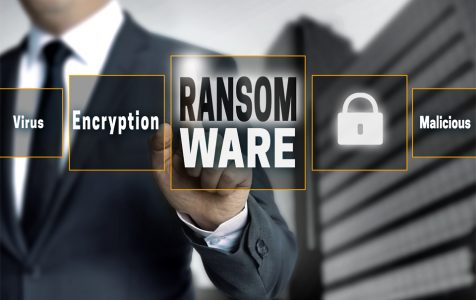There are different types of ransomware that work by encrypting a computer user’s files and demanding that the victim makes a ransom payment in Bitcoin cryptocurrency. The user is promised that once the payment has been sent, he/she will receive a decryption key that will unlock the files. Users believe that their data will be restored, but that’s a total lie.
There’s no guarantee that the hackers will send the decryption key as promised. These programs are just a trap to trick unsuspecting users and earn illegal profits.
What is 20dfs Ransomware?
The 20dfs ransomware belongs to the file-locking class of cryptovirus. It is designed to infect files and block users from accessing the files until they pay a ransom. In most cases, a hefty ransom of up to $500 is demanded for alleged file unlocking.
The ransomware locks all types of files found on the computer, including pictures, videos, music, documents, and databases. Without the decryption key, all the files are completely inaccessible, and thus useless.
What Can 20dfs Ransomware Do?
This ransomware is one of the computer users’ worst nightmares. The infection spreads quickly and significantly affect your computer’s performance. The 20dfs ransomware may do any of the following:
- Change settings.
- Add and disable functions.
- Install or delete files, programs, and system folders.
Additionally, when the 20dfs ransomware infiltrates your computer, it becomes very easy for other malware such as password-stealing spyware and Trojans to be installed without your knowledge.
20dfs uses strong encryption algorithms to encrypt files. Aside from encrypting files, this ransomware also changes the file extensions. This marking is the final step in the process of encrypting files. The file extension is changed to “.20dfs,” which causes the files to be completely inoperative. The nasty ransomware got its name from the extension.
20dfs Ransomware Symptoms
Since this cryptovirus is mainly focused on data alterations, most of the file recovery functions are intentionally disabled. Apart from this, here are other symptoms that you’ll notice:
- Locked out of accessing previously functional files.
- Stored files have a different extension.
- You see a ransom note on your desktop.
If you notice these symptoms on your computer, you need to get rid of the 20dfs ransomware as soon as possible.
Dealing with the Threats
The ransom note is saved on the computer desktop, and it provides instructions on how the victims should contact the cybercriminals. The message states that all files have been locked due to some security reasons, and they can only be opened using a private decryption key.
All communication is done via fake emails, so it’s impossible to tell who is behind the attack. The reason as to why the cyber criminals ask that the payment be paid in cryptocurrency is to avoid being traced.
The hackers warn you that if you try to decrypt the files using third-party software, it’ll result in permanent loss of data.
Experts suggest that the ransom note should be ignored. Paying the ransom is not the best way to handle the situation as it promotes illegal extortion methods. We also mentioned before that you’ll most likely not receive the decryption key. Removing the ransomware from your computer should be your first priority.
20dfs Ransomware Removal Process
To make sure that your computer is safe again, you need to remove the ransomware by following simple 20dfs ransomware removal instructions, and then continue repairing the affected system functions.
When the ransomware infects computers, it changes the system settings, making it hard for users to eliminate malicious files. The alterations may then cause a partial or a full lockdown on your computer. Perhaps the safest way to remove the 20dfs ransomware is by booting your system via Safe Mode.
There are two methods you can use to manually remove the ransomware:
- Method I: Safe Mode with Networking
- Method II: Safe Mode with System Restore
The surest way to remove the 20dfs ransomware is by using a robust anti-malware tool and running a full system scan on your computer. This is necessary because if any malicious files are left, they will renew the re-infection process.
How to Recover Your Data
Keep in mind that the anti-malware programs remove the 20dfs ransomware but do not recover your encrypted files. And unfortunately, the ransomware is not decryptable at the moment.
However, you can try using special tools to restore files that have been encrypted. Simply follow this procedure:
- Download and install data restore program e.g., Stellar Data Recovery, Recuva, or Data Recovery Pro.
- Run the program.
- Select the drives that contain your data.
- Choose the files you wish to restore.
- Click the “restore/recover” button.
It is worth noting that adding your files back to your computer without removing all the threats can trigger a second round of encryption and result in theft or loss of data. So, make sure to get rid of the ransomware first.
Conclusion
As you can see, resolving issues caused by the 20dfs ransomware is quite difficult, and the loss of data could be permanent. It pays to prevent such ransomware attacks by always ensuring that you have a reliable anti-malware tool on your computer. You should also back up your files regularly in an external drive so that you can easily recover your data.
